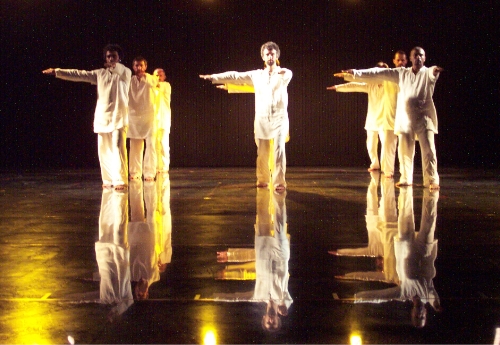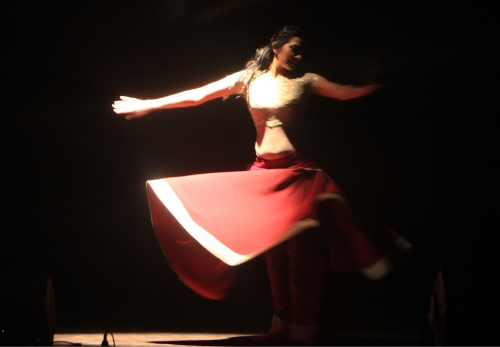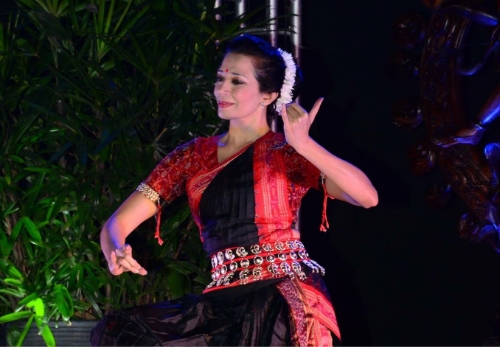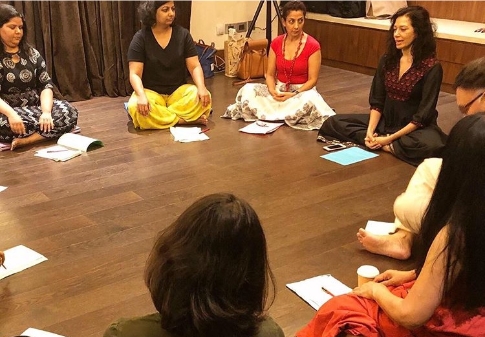Gurdjieff Sacred Dances
There\'s no upcoming event at this time
The Movements
George Gurdjieff, an Armenian mystic born in the early 19th century traveled through the sacred routes in search of the TRUTH. He stumbled upon them in mysterious sacred temples hidden deep within the folds of the Caucasus Mountains of the Middle East. The Sacred Dances were an integral part of esoteric schoolwork and were studied by seekers of the path to invoke the presence of our higher consciousness.
There are about 200 structured, choreographed dances originating in the Sufi Traditions, consisting of Ceremonial Dances, Sufi Whirling, Men’s Dervish Movements and Women’s Prayer Dances. These movements, reconstructed from lost traditions, are a spiritual and mystical experience, which inspire deeper levels of awareness. Special music accompanies the dances, composed by Gurdjieff and Thomas De Hartmann, resonating with objective cosmic laws. The music, like the dances, is designed to affect the dancers’ state of consciousness.
The Sacred Dances are not an end in itself. They are the beginning of a journey to our spiritual depths. We practice above all else ‘presence’. Like Gurdjieff used to call it ‘presence of being’ and Buddha called this same presence ‘Samasati’ which means ‘remember you are a Buddha’, Kabir called it ‘Surati’ – right remembrance.
In developing ‘presence of being’ a certain effort and alertness is required. The dances consist of highly structured exact postures and multiple rhythms to follow. Absolute precision of movement is demanded, from the palms of the hands to the slightest position of the feet. All the attention is directed inwards – on the energy moving through the body sensing the positions from inside, in the change of feelings and emotions as one shifts from posture to posture the energy is drawn further inwards. Emphasis is placed on learning from an inner space of relaxation, allowing alertness to become effortless.
Gurdjieff gave importance to the three centers of our being: the mind (mental), the heart (emotional) and the body (physical). He explained that when our three centers work together and in harmony, a certain alignment takes place within us and we experience the fourth dimension - a force that connects us to our Truth. He called his teachings ‘the fourth way’, when we transcend all our states of attachment and arrive at a state of pure being. He gave importance to dance as a method of practice on the path to the fourth way.
-OSHO Darshan Diary
- Balancing of body, mind and feelings
- Sharpening of motor co-ordination
- Transcending beyond personality & conditioning
- Meditation in motion and stillness
- Inner discipline, harmony & silence
- The dances are practiced in silence and in structured group discussions students are encouraged to share
- their learning experience and inner process.
These dances can be explored and practiced by anyone willing to. There is no age barrier and prior dance experience is not required.
G.I. Gurdjieff
George Ivanovich Gurdjieff, a Greek-Armenian, was born in 1866 in Alexandropol, on the border of Russia and Turkey. In search of esoteric knowledge and ancient spiritual wisdom, he traveled the sacred routes of Egypt, Central Asia, Tibet and India. He spent more than 20 years traveling, learning, teaching and finally escaped the Russian Revolution 1912 with a small group of students, and setup his first school in France ‘Institute for The Harmonious Development of Man’.
Gurdjieff’s teachings and the practice at the school were known as ‘the work’. This consisted the study of cosmic sciences, mathematics, universal laws, human psychology, dances, meditation and spiritual evolution. Gurdjieff oriented a lot of his teachings to the study of the ancient Egyptian symbol – The Enneagram – a nine pointed star. Many of the original dances and the movements reconstructed by Gurdjieff were based on this ancient symbol, which he studied with the esoteric Sarmouni Brotherhood (a Sufi sect).
The Enneagram represents the unification of the cosmic laws. The Law of Seven describes how a process occurs; the law of three describes what makes it happen. Every completion goes thru six phases and the worldly manifestation of GOD comes in nine aspects. (In the Indian Mythological Sciences, Godess Durga also has 9 avatars.)
Through his travels, Gurdjieff discovered the system of ideas - the ‘Fourth Way’ that formed the basis of his subsequent teaching and writing. Together with P.D. Ouspensky they created a large body of work that can be found in their books. Gurdjieff left his body in 1949, leaving behind four books authored by him:
All and Everything: Beelzebub’s Tales to His Grandson – G.I Gurdjieff
Meetings With Remarkable Men – G.I. Gurdjieff
Life Is Real Only Then, When "I Am" – G.I. Gurdjieff
Views from the Real World – G I. Gurdjieff
Other books by disciples of Gurdjieff:
In Search of the Miraculous – P.D. Ouspensky
The Fourth Way – P.D. Ouspensky
Teachings Of Gurdjieff – C.S.Nott
The Witness – J.G Benett
The Fourth Way
Let me tell you that there are four ways to approach truth.
Man has three dimensions in him: action, knowing, feeling.
The first way -- KARMA yoga: being in action without being a doer. You let God do. You efface yourself. In this, the path of action, consciousness changes the content.
The second path is the path of knowledge, knowing -- GYANA yoga. You have to drop all that you carry in your mind as A PRIORI notions -- and then let the reality be there. Whatsoever it is, you just see it. And that changes you. To know the real is to be transformed. Once you have known the reality, reality starts changing you. Consciousness is changed by the content.
The third is BHAKTI yoga -- the way of feeling. Love is the goal. Consciousness changes the content and the content changes consciousness. The change is mutual. The lover changes the beloved, the beloved changes the lover.
On the path of will, consciousness changes content, on the path of knowing, content changes consciousness; on the path of feeling, both interact, both affect each other.
These are the three ordinary paths. Sufism is the fourth. One of the greatest Sufis of this age was George Gurdjieff. His disciple, P. D. Ouspensky, has written a book called THE FOURTH WAY. It is very symbolic. What is this fourth way? If it is neither of action, nor of knowing, nor of feeling -- because these are the three faculties -- then what is this fourth way? The fourth way is the way of transcendence. In India this is called RAJA yoga -- the royal path, the fourth way.
Neither consciousness changes the content, nor the content changes consciousness. Nothing changes nothing. All is as it is with no change. Content is there, consciousness is here, and no change is happening.
This is what I mean by being. With all the three paths something remains in the mind that has to be done. With the fourth, all becoming disappears. You simply accept whatsoever is. In that acceptance is transcendence. In that very acceptance you go beyond. You remain just a witness. You are no longer doing anything here, you are just-being here.
A goal is not possible with the fourth way. There is no goal. With the first, the goal is freedom; with the second, truth; with the third, love. With the fourth there is no goal. Zen and Sufism belong to the fourth. That's why Zen people say 'the pathless path, the gateless gate' -- because there is no goal. The goal-less goal. We are not going anywhere. We are not striving for anything. All that is needed is already here. It has been here all along. You have just to be silent and see. There is no need to change anything. With the fourth, the myth of change disappears.
Osho.....
Sacred Dances
Awards & Honors
As an exponent of Sacred Dance

Speaker at 3rd World Parliament on Spirituality
The World United 2020
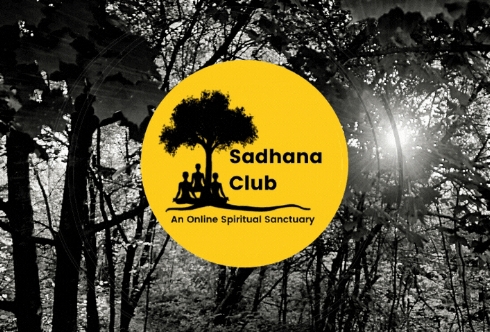
Speaker at The Bhakti Yoga Summit
Cayman Islands 2020

Rotary Club Inner Wheel
Mumbai 2020

Access Life - Artists For A Cause
Mumbai 2019

12th Global Festival of Spiritual Sciences
Bangalore 2019

11th Global Festival of Spiritual Sciences
Bangalore 2018

Elephanta Festival
Mumbai 2018

Tapi Festival
Surat 2018

Delhi International Arts Festival
2016

ISHMA, Spiritual wellness & Leadership Awards
Mumbai 2015

21st Lion's Gold Awards
Mumbai 2008
25+
Years Of Experience
500+
Workshops
200+
Shows
Performances & Workshops
With prestigious organizations

Round Glass Company
USA 2021

Wellbeing Project
Austria
USA 2019

Round Glass Wellbeing
Atmantan 2019

YPO
Bangalore, Mumbai 2017-2018

FICCI
Delhi, Jaipur, Pune, Ahmedabad
2017-2019

Wajid Ali Shah Festival
Lucknow 2017

IAPAR - International Theatre Festival
Pune 2016

Aurora Borealis Global Convention
Norway, Svalbard 2016

Jahan - e- Khusrau World Sufi Festival
Delhi, Jaipur, Lucknow 2012

Sadhana Club
Cayman Islands 2020

Anahata Retreats
Goa, Atmantan 2017-2019
